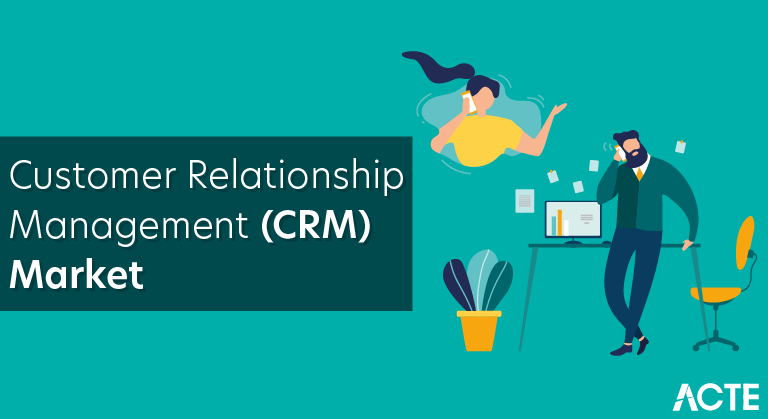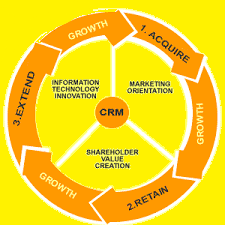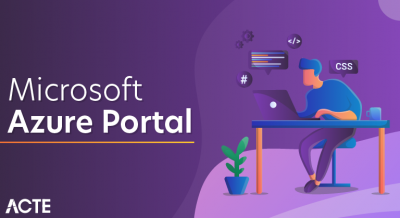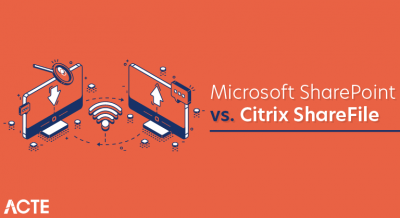
Building sustainable and successful relationships with a large customer base is not the easiest thing to do and will have a direct impact on many core operational processes from product development to debt recovery. It is not purely a technical issue. It is not only about software implementation. And it is not just about sales. It is about the interactions of the entire business with your customers.
Paul Greenberg, the Author of CRM at the Speed of Light, has his own classic definition about CRM:
- “CRM is philosophy and a business strategy, supported by a system and a technology, designed to improve human interactions in a business environment. It is also a continuing business initiative that demands a dynamic, ongoing strategy of customer engagement”.
Scott Hornstein, the Principal of Hornstein Associates, defines CRM as:
- “CRM is the delivery of customer care as a strategic product, with measurement and reward focused on generating happier customers that stay longer and buy more”.
In summary, Customer relationship management (CRM) covers methods and technologies used by companies to manage their relationships with clients. Information stored on existing customers (and potential customers) is analyzed and used to this end. Automated CRM processes are often used to generate automatic personalized marketing based on the customer information stored in the system.

What is All the Fuss about Social CRM?
The latest evolution of CRM in today’s social customers, Social CRM is known as the use of social media channels, techniques and technology to support companies to build relationships with its customers. Social Customers want to interact with companies in different ways, this has been the rise of Social CRM. Let’s hear what Paul Greenberg says about Social CRM:
“Social CRM is a philosophy and a business strategy, supported by a technology platform, business rules, workflow, processes and social characteristics, designed to engage the customer in a collaborative conversation in order to provide mutually beneficial value in a trusted and transparent business environment. It’s the company’s response to the customer’s ownership of the conversation.”
Here are some samples of Social CRM applications available in the market: Salesforce.com, Coffee Bean Technology, Nimble, NetSuite, Kana, SageCRM.
CRM Architectures
There are three fundamental components in CRM:
Operational CRM: Automation of Basic Business Processes (Marketing, Sales and Service)
Operational CRM provides automated support to front office business processes (sales, marketing and service). Each interaction with a customer is generally added to a customer’s history and staff can retrieve information on customers from the database as necessary. According to Gartner Group, operational CRM typically involves three general areas:
- Sales Force Automation: Sales Force Automation automates some of a company’s critical sales activities and sales force management tasks, such as forecasting, sales administration, tracking customer preferences and demographics, performance management, lead management, account management, contact management and quote management. Some sample of Sales Force Automation software: Sales Nexus, Nimble.com, Salesforce.com, capsuleCRM
- Customer Service/Support and Contact Center. Customer Service/Support and Contact Center automates certain service requests, complaints, product returns and enquiries. Some samples in the market: Desk.com help desk, zendesk.com, freshdesk.com, etc.
- Marketing Automation. One key objective in marketing is to generate sales leads that in the end get converted into revenues. Marketing Automation automates activities in marketing planning and execution. Marketing Automation applications are used to improve marketing efficiency. Some samples of this application in the market: Campaigner (Email Marketing Software)., marketo, InTouch CRM, etc.
An integrated operational CRM software is often known as a ‘front office solution’ as it deals directly with customers. It’s a complete CRM suite covers at least 3 areas; Sales Force Automation, Customer Service/Support & Contact Center and Marketing Automation. These solutions seamlessly manage and consolidate the disparate and soiled processes that commonly happen across multiple customer-facing units. With this integrated CRM suite, all sales, marketing and service personnel can share and retrieve the same information and work in sync.
Some samples of CRM suite applications: SAP, Oracle Siebel, Pivotal (CDC Software), Salesforce.com, C2CRM, Front range, Lead Master, and many more.
Analytical CRM: Analysis of Customer Data and Behavior using Business Intelligence
Analytical CRM analyzes data (gathered as part of operational CRM, or from other sources) in an attempt to identify means to enhance a company’s relationship with its clients. The results of an analysis can be used to design targeted marketing campaigns, for example:
- Acquisition: cross-selling, up-selling
- Retention: retaining existing customers
- Information: providing timely and regular information to customers
Other examples of the applications of analyses include:
- Contact optimization
- Evaluating and improving customer satisfaction
- Optimizing sales coverage
- Fraud detection
- Financial forecasts
- Price optimizations
- Product development
- Program evaluation
- Risk assessment and management
Data collection and analysis is viewed as a continuing and iterative process. Ideally, business decisions are refined over time, based on feedback from earlier analyses and decisions. Most analytical CRM projects use a data warehouse to manage data.
Collaborative CRM: Communicating with Customers
Collaborative CRM focuses on the interaction with customers (personal interaction, letter, fax, phone, internet, email, etc). Collaborative CRM includes:
- Providing efficient communication with customers across various communication channels
- Providing online services to reduce customer service costs
- Providing access to customer information while interacting with customers
- Driven by authors from the Harvard Business School (Kracklauer/Mills/Seifert), collaborative CRM also seems to be the new paradigm to succeed the leading Efficient Consumer Response and Category Management concept in the industry/trade relationship.
Implementing CRM
CRM is a corporate level strategy, focusing on creating and maintaining relationships with customers. Several commercial CRM software packages are available which vary in their approach to CRM. However, CRM is not a technology itself, but rather a holistic approach to an organization’s philosophy, placing the emphasis firmly on the customer. CRM governs an organization’s philosophy at all levels, including policies and processes, front of house customer service, employee training, marketing, systems and information management. CRM systems are integrated end-to-end across Marketing, Sales and Service.
A CRM system should:
- Identify factors important to clients
- Promote a customer-oriented philosophy
- Adopt customer-based measures
- Develop end-to-end processes to serve customers
- Provide successful customer support
- Handle customer complaints
- Track all aspects of sales
- Automate marketing planning and execution.
Types of CRM Vendors
CRM vendors in the marketplace are wide and varied. Some vendors are focused on the enterprise solutions, the others focus on specific functional specialties such as Customer Service or Sales Automation. Some vendors offer full suite applications for large corporations, but there are also many vendors focused on providing solutions for small-medium size companies. Some vendors offer a monthly-subscription model also known as SAAS: software as a service, while others charge based on the number of users. In terms of deployment, some vendors offer on-premise solutions while others are hosted. This will be depending on the company’s requirements and needs and strategic direction.
Delivery Model
Hosted CRM
In Hosted CRM; hardware, software and all components are maintained by third-party hosting providers or by the CRM vendors. The vendors store and manage customer data in their premises. Customers need not to do the hassle of IT things but concentrate on managing their own-business. To access the system, customers will only need access to the internet and can enjoy the CRM hosted applications and all the functionalities. With Hosted CRM, customers can enjoy the advantage of the latest technology tools at a more affordable price.
- Some of Hosted CRM applications: Nimble.com, Salesforce.com, Sales Nexus, Desk.com , Intouch CRM, Coffee Bean Technology, Capsule, Brightpearl.
On-Premise CRM
Well Known as a licensed-software or in-house CRM, in the contrary with Hosted CRM, in the On-premise CRM, customers purchase the CRM software license, manage all the data as well as all the maintenance aspects of owning a software package. Huge corporations that have more complex business processes and requirements are typically suitable to choose this approach.
- Some of On-Premise CRM applications: SAP, Pivotal (CDC Software), Amdocs, Maximizer, Microsoft Dynamics, Sage, Avidian Technologies, Infor, KANA, Clarity, SugarCRM, etc.
Uses of CRM
In its broadest sense, CRM covers all interaction and business with customers. A good CRM program allows a business to acquire customers, provide customer services and retain valued customers. Customer services can be improved by:
- Providing online access to product information and technical assistance around the clock
- Identifying what customers value and devising appropriate service strategies for each customer
- Providing mechanism for managing and scheduling follow-up sales calls
- Tracking all contacts with a customer
- Identifying potential problems before they occur
- Providing a user-friendly mechanism for registering customer complaints
- Providing a mechanism for handling problems and complaints
- Providing a mechanism for correcting service deficiencies
- Storing customer interests in order to target customer selectively
- Providing mechanisms for managing and scheduling maintenance, repair and on-going support
Technical Considerations
The following factors need to be considered:
- Scalability: the system should be highly scalable, as the volume of data stored in the system, grows over time.
- Communication channels: CRM can interface with a variety of different channels (phone, WAP, internet, etc)
- Workflow – a company’s business processes need to be represented by the system with the ability to track the individual stages and transfer information between steps
- Assignment – the ability to assign requests, such as service requests, to a person or group
- Database – the means of storing customer data and histories (in a data warehouse)
- Customer privacy considerations, such as data encryption and legislation
Improving Customer Relationship
CRM applications often track customer interests and requirements, as well as their buying habits. This information can be used to target customers selectively. Furthermore, the products a customer has purchased can be tracked throughout the product’s life cycle, allowing customers to receive information concerning a product or to target customers with information on alternative products once a product begins to be phased out. Repeat purchases rely on customer satisfaction, which in turn comes from a deeper understanding of each customer and individual needs. CRM is an alternative to the “one size fits all” approach. In industrial markets, the technology can be used to coordinate the conflicting and changing purchase criteria of the sector.
Privacy and Ethical Concerns
The data gathered as part of CRM raises concerns over customer privacy and enables coercive sales techniques. However, CRM does not necessarily involve gathering new data, but also includes making better use of customer information gathered as a result of routine customer interaction. The privacy debate generally focuses on the customer information stored in the centralized database itself, and fears over a company’s handling of this information, especially regarding third parties.
CRM for Non-Profit Organizations
CRM is also important to non-profit organizations, which sometimes use the terms “constituent relationship management”, “contact relationship management” or “community relationship management” to describe their information system for managing donors, volunteers and other supporters. (Source: gathered and compiled from many sources).
Benefits of CRM
Improves Customer Service
CRM manages all your contacts and aggregates lead and customer information to build profiles of everyone you interact with. This gives you easy access to important information on customer behavior like purchase records and previous communications with contacts across different channels (social media, chat, email, etc.). Customers won’t have to repeat their story over and over to you, and you’ll be able to address issues with best practice and less effort for improved customer loyalty.
Increase in Sales
Streamlining and improving the sales process, building a sales pipeline, automating tasks, and analyzing your sales data will inevitably lead to one outcome—increased sales and sales productivity. CRM allows you to have all your customer-facing voice, chat, social media, and email touch points accessible in one place. You’ll clinch more deals by building a repeatable, proven sales process, and delivering the right message on the right channel at just the right time.
Retain More Customers
Retention and churn rates are extremely important determiners for a company’s success; customer churn is a major obstacle to business growth. CRM tools like sentiment analysis, automated ticketing, and customer support and customer service automation can dramatically improve your retention by letting human agents defuse problems. Analytics tools that look at customer life cycle can show you when churn happens and why, so you can identify and address pain points.
Better Analytics
Analytical CRM tools make your data available, intelligible, and relevant to your business needs. All your heaps of sales data, finance data, and marketing data flow into CRM to become visible metrics, with data warehousing and data mining there to make sense of everything. The net benefit is customer acquisition, customer retention, and better data management.
Higher Efficiency
Having all your major day-to-day business functions in one place makes for better workflow, easier collaboration between team members, and better project management. Task automation eliminates menial, repetitive work and gives more time for the cognitive tasks humans are best at. Dashboards and analytics will help you gain insights into your work and optimize all kinds of business processes.
Better knowledge sharing
Miscommunication and lack of information transfer are two major time-wasters. When people take time self-learning to do things other team members already know how to do, or work on redundant tasks, you’re losing a lot of hours per week. Collaborative CRM tools can streamline your teamwork by letting you build a knowledge base, establish best practice workflows, and allowing for friction less communication between team members.
More transparency
CRM allows you to foster greater transparency in your organization by assigning tasks, showing work, and delineating exactly who is who and who is doing what. If your main concern is sales, you can make use of performance tracking for individual sales agents. CRM allows everyone in your organization to gain visibility on your business processes, fostering more mutual understanding and collaboration.
How CRM Works?
- CRMs pull in information from social media, your website, email, voice calls, and other channels to help you get more customers and keep the ones you have. They give you a single place to organize your workflows and business processes, so you can collaborate, close more deals, and get more done.
- Marketing and sales force automation, contact and project management—these are the bread and butter features of CRM.
- In practice, CRM should work with the way your business works. There are many types of good CRM out there, and none one-size-fits-all/right CRM option. However, there is most definitely a CRM technology tailored for every company’s unique business strategy.
The basics of CRM
- CRMs are generally designed to streamline and improve customer interaction, the sales process, and the running of marketing campaigns. They do this by improving efficiencies across workflow and the sales pipeline—automating tasks, and analyzing data.
- A solid CRM strategy provides an all-in-one solution for managing your team’s voice, chat, and email touch points. They track leads, customer needs, offers, and conversions in one place, and help with optimizing your website and running ad campaigns.
- That improves the mechanism behind your business and dramatically increases visibility on your team, customer base, and to the broader public.
- Keeping track of all that data makes task automation one of the most significant advantages provided by today’s CRMs. By letting machine learning and analytics do some of the heavy lifting, you save time and keep yourself from getting burned out on cognitively distressing or low brain-activity tasks.
- Making phone calls within your CRM platform automatically generates data in real time, the date, who made the call, and so much more. You’ll be able to automatically track old and new customers and schedule follow-ups, with a centralized base for contact information.
- Click to call, cross-platform functionality makes it a breeze to call from anywhere, makes your business more agile, and saves an incredible amount of money on phone bills.
- Email integration streamlines the sales process from your inbox, letting let you organize leads, appointments, and contacts, sync information from Gmail to your CRM, and generate follow-up reminders to close more deals.
- Meanwhile, new developments in natural language processing and machine learning are making CRM better and better at transcribing (and logging) phone conversations into actionable items so that no customer detail is forgotten.






